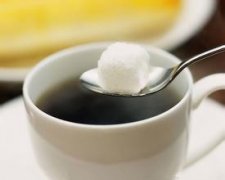Coffee history is one of the most romantic stories.

With the first coffee bean picked, the first roasting test, the first grinding, the first blending and the mellow smell of the first cup of hot coffee, the legend of coffee cultivation and coffee culture spreading on our small planet has become one of the greatest and most romantic stories in history.
There are all kinds of legends about the origin of coffee, but most of them are forgotten because of its absurdity. However, people will not forget that Africa is the hometown of coffee. Coffee trees are likely to be found in Ethiopia's KAFFA province. Later, batches of slaves were sold from Africa to Yemen and the Arabian Peninsula, and coffee was taken everywhere along the way. To be sure, Yemen started growing coffee in the 15th century or earlier. Although Arabia had the busiest port city in the world at that time, it banned the export of any seeds. This barrier was finally broken through by the Dutch, and in 1616, they finally smuggled the surviving coffee trees and seeds to the Netherlands and began to grow them in greenhouses. Although Arabs ban the export of coffee seeds, they are indeed very open inside. The first coffee shops known as "Kavin Kahn" opened in Mecca, and for the first time in human history, anyone who spent a cup of coffee could go in and sit in a comfortable environment to do business and date.
Coffee enters Asia
The Arabs failed to spread coffee in Asia, but the Dutch did! In the process of colonization, they grew coffee in Malaba, India, and brought it to Batavia in what is now Java, Indonesia, in 1699. The Dutch colonies once became the main supplier of coffee in Europe. At present, Indonesia is the fourth largest coffee exporter in the world.
Coffee enters Europe
Venice merchants first brought coffee to Europe in 1615. By 1683, Europe's first coffee shop opened in Venice, and the most famous was the Floran Cafe, which opened in St. Mark's Square in 1720 and is still doing brisk business today. It is worth mentioning that London Lloyd, the world's largest insurer, started as a coffee shop.
Coffee enters America
Coffee became popular in South America as a fashionable drink in 1668, followed by coffee houses in New York, Philadelphia, Boston and other North American cities. The Boston Tea Party case of 1773 was planned in a coffee shop called Green Dragon. Today, both the New York Stock Exchange and the Bank of New York in the famous Wall Street financial district start in coffee shops. Coffee was first grown in America in the 1820s, and it was the Dutch who first spread coffee to Central and South America. Coffee spread from the Dutch colonies to French Guiana and Brazil, and then by the British to Jamaica. By 1925, growing coffee had become a tradition in Central and South America. In the same year, Hawaii also began to grow coffee, which is the only coffee producer in the United States, and Hawaiian coffee is one of the best coffee in the world. To date, Brazil is already the world's largest coffee producer, accounting for about 30 per cent of global coffee production, while Colombia is the second largest coffee producer, accounting for about 12 per cent of global coffee production. North America is currently the two largest coffee consumption region. In Seattle, "Latai" culture reinterprets the connotation of coffee culture, combining unique flavor coffee, beautifully designed coffee utensils with fashion and art, and sweeping the world.
Coffee enters China
According to historical records, coffee was first planted in Taiwan in 1884, which opened the prelude to the development of coffee in China. The earliest coffee cultivation in the mainland began in Yunnan, when a French missionary brought the first coffee seedlings to Binchuan County in Yunnan Province at the beginning of the 20th century. In the following nearly a hundred years, coffee was only "dotted" in the vast territory of China. However, in recent years, the development of coffee cultivation and consumption in China has attracted more and more attention of the world. Maxwell, Nestle, Colombia and other international coffee companies have set up branches or factories in China to provide better varieties and prices for the Chinese market. As a part of the Western way of life, coffee has officially entered the Chinese family and life; cafes in Beijing, Shanghai, Guangzhou and other big cities have sprung up with the growth of coffee culture, becoming a new consumption fashion for young people, decorated with urban customs.
Important Notice :
前街咖啡 FrontStreet Coffee has moved to new addredd:
FrontStreet Coffee Address: 315,Donghua East Road,GuangZhou
Tel:020 38364473
- Prev

Teach you how to make traditional and modern coffee
-traditional coffee making method-siphon brewing method: using the principle of vapor pressure (a method invented by marine engineers, probably inspired by a steam engine), the heated water, from the beaker below, flows up through the siphon and filter cloth, and then mixed with the coffee powder in the upper cup, and the ingredients in the coffee powder are completely quenched out, and the quenched coffee is refined.
- Next

The Development of Coffee in the World for one hundred years
In the fifth and sixth centuries AD, African Ethiopian shepherds found sheep dancing wildly after eating red fruit. In 1530 the first coffee shop appeared in Damascus in the north of the Ottoman Turkish Empire. The word coffee first appeared in British newspapers in 1601. The first coffee shop in England was opened at Oxford University in 1650. The first street cafe opened in Venice in 1683. Dimension
Related
- Beginners will see the "Coffee pull flower" guide!
- What is the difference between ice blog purified milk and ordinary milk coffee?
- Why is the Philippines the largest producer of crops in Liberia?
- For coffee extraction, should the fine powder be retained?
- How does extracted espresso fill pressed powder? How much strength does it take to press the powder?
- How to make jasmine cold extract coffee? Is the jasmine + latte good?
- Will this little toy really make the coffee taste better? How does Lily Drip affect coffee extraction?
- Will the action of slapping the filter cup also affect coffee extraction?
- What's the difference between powder-to-water ratio and powder-to-liquid ratio?
- What is the Ethiopian local species? What does it have to do with Heirloom native species?

